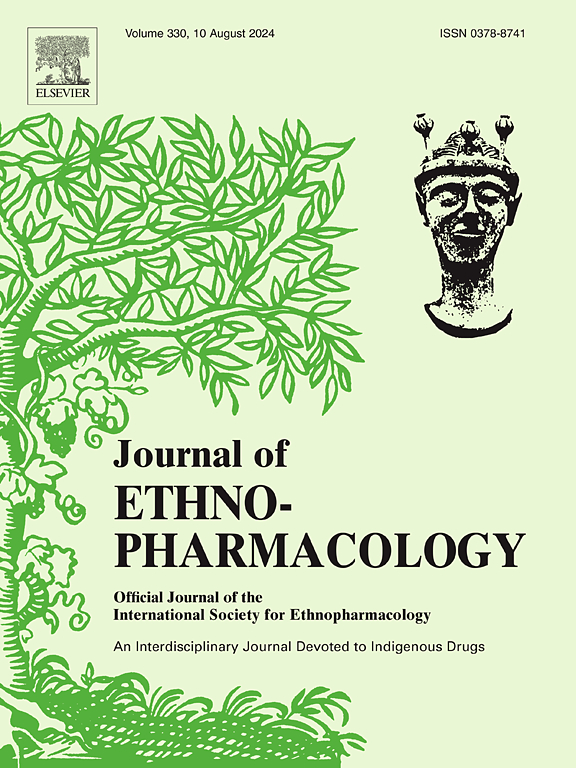The Jieduquyuziyin prescription alleviates systemic lupus erythematosus by modulating B cell metabolic reprogramming via the AMPK/PKM2 signaling pathway
IF 4.8
2区 医学
Q1 CHEMISTRY, MEDICINAL
引用次数: 0
Abstract
Ethnopharmacological relevance
The Jieduquyuziyin prescription (JP) is an enhanced formula derived from the “Sheng Ma Bie Jia Tang” in the Golden Chamber. JP is an empirical formula approved for use in the treatment of systemic lupus erythematosus (SLE) in hospitals across China, demonstrating notable therapeutic effects. It has been shown to suppress B cell activation and alleviate symptoms; however, its underlying mechanism remains unclear.
Aim of the study
The aim of this study is to investigate the effect of JP on B cell metabolic reprogramming in the treatment of SLE and to elucidate the underlying regulatory mechanisms.
Materials and methods
Core targets and pathways regulating B cell activation were identified through sequencing of activated and resting B cells from SLE patients and network pharmacology of JP. Targeted metabolomics was employed to assess JP's effect on B cell metabolism. In vivo experiments evaluated the effects of JP, JP combined with a PKM2 inhibitor, or an AMPK inhibitor on SLE activity, B cell activation and glycolysis.
Results
Bioinformatics analyses identified PKM as a core target in B cell activation, which was significantly upregulated and linked to the inhibition of AMPK signaling. JP reduced B cell glycolysis and activation, leading to significant improvements in disease pathology. The combination of JP with an AMPK inhibitor diminished the therapeutic effect. Further studies suggested that JP inhibits glycolysis-dependent B cell activation via the AMPK/PKM2 pathway, reducing germinal center responses and effector B cells.
Conclusion
This study reveals that the AMPK/PKM2 pathway is a promising therapeutic target for regulating immune metabolic imbalance in SLE B cells. Additionally, it provides evidence that JP may improve SLE by activating the AMPK/PKM2 pathway to inhibit glycolysis-dependent B cell activation, laying the foundation for further investigation of its therapeutic mechanisms.

求助全文
约1分钟内获得全文
求助全文
来源期刊

Journal of ethnopharmacology
医学-全科医学与补充医学
CiteScore
10.30
自引率
5.60%
发文量
967
审稿时长
77 days
期刊介绍:
The Journal of Ethnopharmacology is dedicated to the exchange of information and understandings about people''s use of plants, fungi, animals, microorganisms and minerals and their biological and pharmacological effects based on the principles established through international conventions. Early people confronted with illness and disease, discovered a wealth of useful therapeutic agents in the plant and animal kingdoms. The empirical knowledge of these medicinal substances and their toxic potential was passed on by oral tradition and sometimes recorded in herbals and other texts on materia medica. Many valuable drugs of today (e.g., atropine, ephedrine, tubocurarine, digoxin, reserpine) came into use through the study of indigenous remedies. Chemists continue to use plant-derived drugs (e.g., morphine, taxol, physostigmine, quinidine, emetine) as prototypes in their attempts to develop more effective and less toxic medicinals.
 求助内容:
求助内容: 应助结果提醒方式:
应助结果提醒方式:


